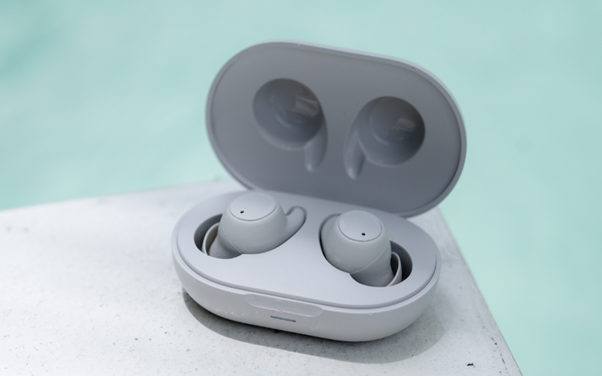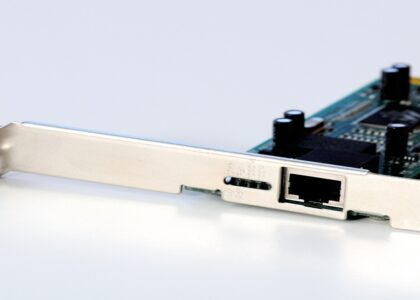Over the last ten years, noise-cancelling technology in true wireless stereo (TWS) earbuds has significantly advanced, shifting from a specialised feature to a common expectation among consumers.
The rising demand for active noise cancelling (ANC) technology has been fueled by a worldwide increase in remote work, commuting, and the desire for personal audio spaces in noisy settings.
Companies like Bose have led the way, continually innovating with their noise-cancelling earbuds.
Explore the development of this technology and learn the opportunities for true wireless ANC earbuds.
The Early Stages: From Passive to Active Noise Cancelling
Noise-cancelling technology in earbuds started with passive noise isolation, which relied on the physical design of the earbud to block external sounds. This quality was achieved through snug-fitting ear tips that created a seal in the ear canal. While effective to some degree, passive noise isolation could not significantly reduce low-frequency noises, such as the hum of an aeroplane engine or the rumble of traffic.
The introduction of active noise cancelling (ANC) marked a significant leap forward. ANC technology uses microphones to pick up external sounds and then generate an inverse sound wave to cancel them out. Early implementations of ANC in earbuds were limited by size and battery constraints, often found only in over-ear headphones. However, advancements in microelectronics and battery efficiency eventually allowed ANC technology to be miniaturised and integrated into TWS earbuds.
The Rise of True Wireless ANC Earbuds
The shift to true wireless stereo (TWS) earbuds was a game-changer for the audio industry. TWS earbuds eliminated the need for any physical connection between the earpieces, offering unmatched convenience and portability. The challenge, however, was incorporating ANC technology into such a compact form factor without compromising on battery life or sound quality.
Pioneers like Bose led the way with their Bose Noise Cancelling Earbuds, which combined ANC with superior audio performance and Bluetooth connectivity. These true wireless ANC earbuds set the standard, offering consumers the best of both worlds: freedom from wires and immersive, noise-free listening experiences. The success of these products spurred other manufacturers to invest heavily in ANC technology, leading to a proliferation of Bluetooth TWS earbuds with noise-cancelling capabilities.
Advancements in ANC Technology: What’s Driving the Evolution?
Several technological advancements have driven the evolution of ANC technology in TWS earbuds:
- Improved Algorithms: Modern ANC earbuds use more sophisticated algorithms to better detect and cancel a broader range of noise frequencies. These algorithms can adapt to different environments, such as a busy street or a quiet office, providing a more tailored noise-cancelling experience.
- Enhanced Microphone Arrays: The number and placement of microphones in TWS earbuds have improved, allowing for more accurate noise detection. Some high-end active noise-cancelling earbuds now feature multiple microphones per earbud, which work together to create a more effective noise-cancelling shield.
- Hybrid ANC: Hybrid ANC combines feedforward and feedback ANC methods, using internal and external microphones to catch and cancel noise. This approach provides more comprehensive noise reduction, particularly in unpredictable environments where noise levels vary.
- Customisable ANC Levels: Many modern true wireless ANC earbuds offer customisable ANC settings, allowing users to choose how much noise cancellation they want. This feature is practical for users wanting to balance awareness of their surroundings with the desire for quiet.
The Future of Noise Cancelling Technology in TWS Earbuds
As we look to the future, several trends are likely to shape the next generation of noise-cancelling TWS earbuds:
- AI-Powered Noise Cancelling: Artificial intelligence (AI) is expected to play a significant role in the future of ANC technology. AI algorithms could analyse and predict ambient noise patterns in real time, dynamically adjusting noise cancelling levels for optimal performance. This attribute could lead to a more seamless and intuitive listening experience, where the earbuds automatically adapt to different environments without user intervention.
- Better Battery Life: One of the primary trade-offs with ANC technology is the increased power consumption. However, ongoing advancements in battery technology and power management are expected to extend the battery life of TWS earbuds, even with ANC activated. This development would enable users to enjoy longer listening sessions without frequent recharging.
- Improved Transparency Modes: While noise cancelling is necessary, there are times when users need to hear their surroundings. Future earbuds are likely to feature more advanced transparency modes, allowing users to switch seamlessly between noise-cancelling and ambient sound listening. These modes could become more adaptive, automatically adjusting based on user activity, such as walking, running, or cycling.
- Integration with Other Wearable Tech: As the wearable tech ecosystem expands, we can expect greater integration between TWS earbuds and other devices, such as smartwatches and fitness trackers. Sports earbuds with noise cancelling capabilities may offer additional features like heart rate monitoring or real-time coaching, providing a more comprehensive fitness experience.
- Smaller, Lighter Designs: The trend toward miniaturisation will continue, with future TWS earbuds becoming even smaller and lighter while still offering powerful ANC. This development could lead to more comfortable and ergonomic designs, making them ideal for extended use, whether for commuting, work, or exercise.
Conclusion
The progression of noise-cancelling technology in Bluetooth TWS earbuds has been extraordinary, significantly altering our audio experiences in everyday life. Beginning with foundational passive noise isolation, the development has led to the advanced true wireless active noise cancelling (ANC) earbuds we see today, a transformation fueled by relentless innovation. Looking forward, improvements in artificial intelligence, battery longevity, and compatibility with other wearable devices are set to further elevate active noise-cancelling earbuds’ functionality.
Visit One Futureworld to enjoy unparalleled noise reduction and superior sound quality today.






